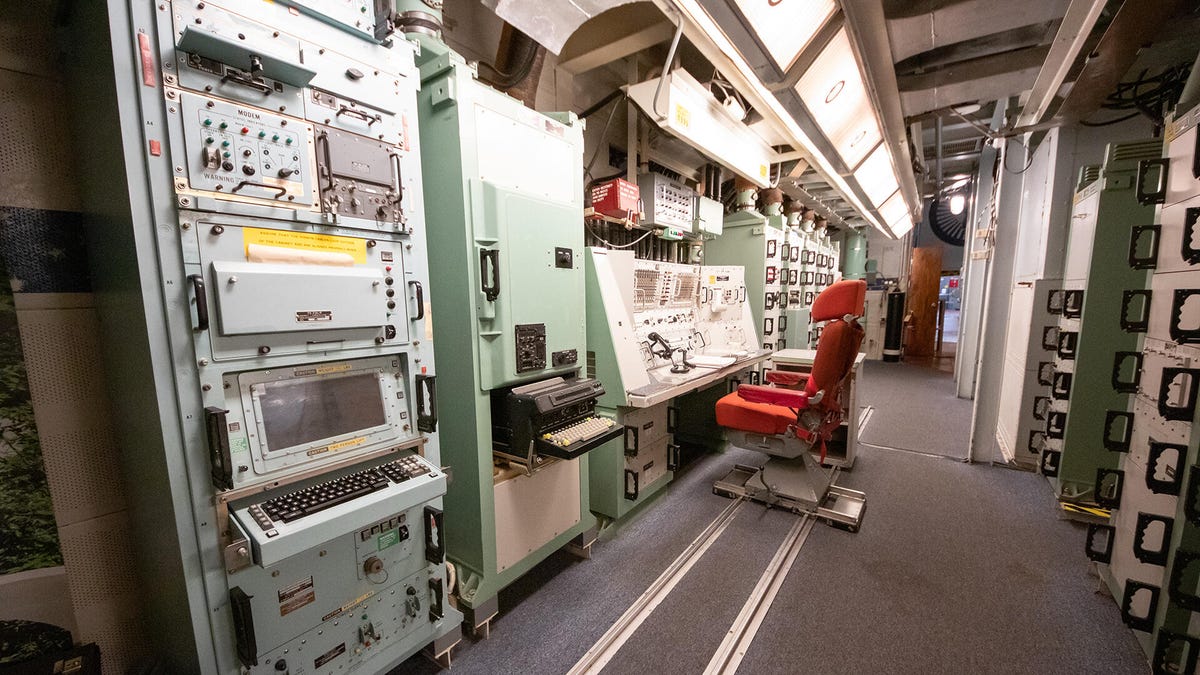 Why You Can Trust CNET
Why You Can Trust CNET Midwest missiles: Minuteman Launch Control Centers hiding in plain sight
Throughout the upper Midwest, thousands of Minuteman missiles stood at the ready throughout the Cold War. Here's a look at what remains.

As the Cold War escalated in the 1960s, the United States scrambled to keep ahead of the perceived Soviet military threat. Along with strategic bombers and huge ICBMs, it also developed the Minuteman missile. Though smaller and not as destructive as the big ICBMs, the Minuteman made up for it in numbers, convenience, and eventually, accuracy.
More than 1,000 Minuteman missiles were installed in shallow launch silos buried throughout the Mountain West and Midwest -- including Wyoming, Montana, North and South Dakota, and all the way down to Colorado and Missouri.
Today, 400 of these missiles remain active as part of continued nuclear deterrence. Nearly all of the rest were decommissioned and their sites demolished. A few, however, remain as remnants and reminders of another time. Two notable sites are almost perfectly preserved Cold War relics. And you can tour them. Here's what they look like inside.
Minuteman Missile National Historic Site
Hidden among the rolling pastoral hills of southwest South Dakota, just north of Badlands National Park and east of motorcycle mecca of Sturgis, is the Minuteman Missile National Historic Site. Given its proximity to several tourist destinations, it's one of the most accessible of the decommissioned sites. It's also part of the National Park system.
In its previous life, the Launch Control Center known as Delta-One was part of the 6th Strategic Missile Squadron of the 44th Strategic Missile Wing. It originally controlled 10 missiles, spread out like spokes on a wheel across southern South Dakota. One training missile is still visible beneath glass in one of the only remaining launch silos.
A visitor's center tells the site's history before you head to the Launch Control Center itself a few miles away. Reserving a space on a guided tour is the only way to see the facility, and space is limited due to the tiny elevator that takes you 30 feet underground to see the equally cramped LCC bunker.
Both the topside facility and the Launch Control Center look just as they did when the site was decommissioned in the 1990s. Much of the equipment dates back much further than that, with teletypes and banks of computers that have less processing power than your phone.
Ronald Reagan Minuteman Missile State Historic Site
Farther to the north, in central-eastern North Dakota, is the Ronald Reagan Minuteman Missile State Historic Site. This was the Oscar-Zero Missile Alert Facility, which had a newer design than Delta-One. The underground facility is not only larger, but also features HVAC equipment and a generator that at Delta-One are on the surface.
The bunkers are hardened against everything but a direct nuclear hit. They're also shielded against an electromagnetic pulse and designed to be self-sufficient for at least long enough to launch their missiles if they were required to do so. All Minuteman LCCs operated under a policy requiring two people in the control center at all times. Despite the near-impossibility of one person launching a missile, why take that risk?
Today the site is run by the State Historical Society of North Dakota. Since it has fewer visitors and a larger elevator, you probably don't need a reservation.
The Pyramid
The Pyramid of North Dakota wasn't directly part of Minuteman: It was a US Army project to develop a ballistic missile shield to protect the Minuteman missiles spread across the Midwest. It never functioned as intended, and was decommissioned only a few months after going live as part of the first ABM treaty.
Officially, it's the Stanley R. Mickelsen Safeguard Complex, and it can be seen from miles away, rising from the flat prairie of ND like some alien object. It looks out of time, out of place, and is entirely unique. I've wanted to see it in person since I first saw a photo of it.
It was sold to a developer last year, so you can't explore inside. I took some more photos from the outside that you can see in the gallery above.
Cold War Relics
These sites offer a fascinating look into our military past. It's not just the technology that's worth a look, but also the lives of the men and women whose fingers were on the button, so to speak (technically it's a key).
By visiting you'll get an idea of the men and women who still fill these roles today, in Minuteman LCC bunkers, hardened against attack, waiting for a signal they hope will never come.
If you're not headed to the Dakotas anytime soon, check out the gallery above for lots of photos from the two sites, and more.
As well as covering audio and display tech, Geoff does photo tours of cool museums and locations around the world, including nuclear submarines, aircraft carriers, medieval castles, epic 10,000-mile road trips and more.
Also check out Budget Travel for Dummies, his travel book, and his bestselling sci-fi novel about city-size submarines. You can follow him on Instagram and YouTube.

